OVER THE CENTURIES scholars have convincingly argued that we understand the world in terms of language. Thinking and language are two sides of the same coin. One is not possible without the other. Schools of thought demanding the highest level of discipline, such as mathematics and logic, are also considered specialized linguistic structures. Philosophy, the mother of all sciences, heavily draws on language across all levels and on all forms. Indian scholarship recognized it long ago; therefore, the study of language was central to the other prominent sciences such as astronomy, medicine, and chemistry. Indian scholars focused mainly on the grammar of Vedic Sanskrit. Nevertheless, correct use of the language on each level—phonology, morphology, syntax, and semantics—was always explicitly emphasized.1 Perhaps the underlying purpose was to strengthen the main carrier of knowledge, language, so that other forms of learning could effortlessly take place.
History of Sanskrit and Swamiji’s Studies
Sanskrit was usually grouped with logic, mathematics, and philosophy. Scholars believe that the serious and organized study of language in India dates back to about 500–400 BCE, when Panini’s work on the grammar of Vedic Sanskrit might have come into existence. Referring to the Aindra, or Indra, school of Sanskrit grammar, Panini himself mentions Garg ya and Shakatayana’s work on Vedic Sanskrit grammar at several places in his classical Ashtadhyayi. Since India had an oral tradition for imparting knowledge to future generations, dates could very well be pushed back by a couple of millennia. However, sage Panini is considered as the first and most notable scholar of the period. His monumental work is indisputably considered the foundation of linguistics by Eastern and Western scholars alike. Panini was followed by sages Katyayana, Patanjali, Bhartrihari, and others. Panini’s work is even today the sourcebook of Sanskrit learning.
One noteworthy point is that most of these scholars had not studied language for the sake of scholarship. It was considered that with out deep and accurate knowledge of linguistic structures, our perception of the world becomes vague. Language is to knowledge what water is to clouds. They may look entirely different in appearance and place, but both are the same. The scholars that pioneered an organized study of the Sanskrit language were philosophers, logicians, mathematicians, littérateur, and also many gurus.
Swami Vivekananda, the chief disciple of Sri Ramakrishna, was one of the prominent Sanskrit scholars of the late nineteenth century. Even as a little boy he had memorized the aphorisms of the Sanskrit grammar Mugdhabodha.2 All through his parivrajya, wandering, days he studied deeply various subjects. In Jaipur ‘he met a noted Sanskrit grammarian. He decided to study grammar (Panini’s Ashtadhyayi)’ (1.277). Later at the Khetri palace he became acquainted with Pandit Narayandas, a foremost Sanskrit scholar, and ‘decided to resume his study of the Mahabhashya (Patanjali’s great commentary) on the Sutras of Panini’ (2.284). Again in Porbandar he finished his study of the Mahabhashya, helped Pandit Shankar Pandurang with the translation of the Vedas, and ‘took up the study of French’ (2.295). Swamiji’s English was flawless and he was fluent in Hindi as well. In Goa he met ‘Alvares who
was greatly impressed by Swamiji’s erudition, immediately made special arrangements for him to stay at the Rachol Seminary, the oldest convent-college of theolog y in Goa, four miles away from Margao, where rare religious literature in manuscripts and printed works in Latin [are] preserved’ (2.319).
Apart from dispelling the prevailing evils of his time, such as superstition, untouchability, and illiteracy, Swamiji is duly credited for the revival of Hinduism. His famous speech beginning with ‘Sisters and brothers of America’, at the World’s Parliament of Religions in Chicago, 1893, brought Hinduism to the centre of world’s attention and world religions. Introducing the knowledge of Indian philosophies from the Upanishads and yoga, to both occidentalists and orientalists, Swamiji also spoke much on the philosophy and importance of language. Drawing on the classical Indian philosophy of language he magnificently illustrated the assumptions, concepts, and goals of language.
On the Supremacy of Sanskrit
Modern linguistic findings accurately confirm the assumptions and views on language held by Swamiji, who always quoted the scriptures as his source of knowledge. Showing his inclination towards the grammar of the Sanskrit language, Swamiji said: ‘Years ago I had an idea of studying the grammar of the Vedas, and I began with all earnestness to study Panini and the Mahabhashya, but to my surprise I found that the best part of the Vedic grammar consists only of exceptions to rules. A rule is made, and after that comes a statement to the effect, “Th is rule will be an exception”. So you see what an amount of liberty there is for anybody to write anything.’3
In ‘Vedanta and its Application to Indian Life’ he said: ‘Th is Sanskrit language is so intricate, the Sanskrit language of the Vedas is so ancient, and the Sanskrit philolog y is so perfect, that any amount of discussion can be carried on for ages in regard to the meaning of one word’ (3.233). In one of his writings he stated: ‘The miracle of language which was called Sanskrit or “perfected”, lending itself to expressing and manipulating them [poetic insight] better than any other tongue. Th e aid of melodious numbers was invoked even to express the hard facts of mathematics’ (6.158).
These statements have not been made merely for the fact that Sanskrit is the language of the ancient Hindu scriptures, but they include a deeper linguistic insight. There are computer scientists who are of the opinion that Sanskrit can act as a perfect language for programming and scientific applications. Sanskrit is already widely used as a meta-language for knowledge-representation in machine-translation and other areas of natural language processing, because of its highly regular and unambiguous structure. It was not that Swamiji spoke only about the Sanskrit language. It is just that he found the Sanskrit language better than other natural languages. He held that all languages act as basic tools of communication within their own structural and conceptual limitations. All languages, from the standard to the least used vernacular, have their own importance. He clarified: ‘The difference between the language of the highest philosophers and the utterances of the babies is one of degree not of kind. What you call the most correct, systematic, and mathematical language of the present time, and the hazy, mystical, mythological languages of the ancients, differ only in degree. All of them have a grand idea behind, which is, as it were, struggling to express itself ’(2.74). ‘My ideal of language is my Master’s language, most colloquial and yet most expressive. It must express the thought which is intended to be conveyed’ (5.259).
How deeply familiar and interested he was with the physical and psychological mechanism of production, cognition, and acquisition of linguistic structures can easily be understood by his statements. For example, in Raja Yoga he described the process of speech-sound production. He wonderfully explained the articulatory mechanism involved in the production of Om: ‘In making a sound we use the larynx and the palate as a sounding board. … Om (Aum) is such a sound, the basis of all sounds. The first letter, A, is the root sound, the key, pronounced without touching any part of the tongue or palate; M represents the last sound in the series, being produced by the closed lips, and the U rolls from the very root to the end of the sounding board of the mouth.’ (1.218–9).
The following statement, from one of his letters, also reveals his adherence to the correct articulation of the sounds and description of words: ‘“Mister” is “Monsieur” in the French language, and “Miss” is “Mademoiselle”—with a Z-sound’ (7.373).
On Language and Thought
India has a rich tradition of exploring the mind, perception, cognition, and consciousness. Most of these spheres have been studied in the various schools of Indian philosophy and logic. Considering language as a prime component of thought, and hence closely related to all these processes, centuries ago Indian scholars had made some appealing revelations. Until the latter half of the twentieth century CE, how language is connected to and represented in the mind was an open question in the West. In contrast, mentioning one of the oldest schools of Indian Philosophy, the Nyaya, Swamiji opined: ‘This knowledge … is inherent in man. No knowledge comes from outside; it is all inside. What we say a man “knows”, should, in strict psychological language, be what he “discovers” or “unveils”; what a man “learns” is really what he “discovers”’ (1.28).
Every idea that you have in mind has a counterpart in a word; the word and thought are inseparable. … No man can by analysis, separate thought from word. … Although we see that there must always be a word with a thought, it is not necessary that the same thought requires the same word. The thought may be the same in twenty different countries, yet the language is different. … We must have a word to express each thought, but these words need not necessarily have the same sound. … These sounds vary, yet the relation between sounds and thoughts is a natural one. … A symbol is the manifester of the thing signified. … There must be a natural connection between the symbol and the thing signified; then, when that symbol is pronounced, it recalls the thing signified (1.217–8).
The analysis of the language of a people can reveal its overall philosophy of life. Swamiji, at various places, explained how different linguistic conceptualizations for the same action or event can reveal the cultural framework, spiritual grounding, societal acceptance, and attitudes of a people. One of his most quoted examples about ‘death’ is as follows: ‘In Western language [English], a man gives up the ghost, but in our language a man gives up his body. The Western man is a body fi rst, and then he has a soul; with us a man is a soul and spirit, and he has body. Therein lies a world of difference’ (3.380).
In reply to a question: ‘Is the relation between concepts and words necessary and immutable, or accidental and conventional?’ (5.315) Swamiji answered: ‘It seems that there is a necessary relation, but not absolutely so, as it appears from the diversity of language. Th ere may be some subtle relation which we are not yet able to detect’ (ibid.).
Swamiji discussed the possible development of modern languages from Sanskrit in India and the world. He believed that all languages have grown out of Sanskrit over a long period of time. Factors such as migration, climate, natural objects, differing lifestyles and needs, culture, and religion had brought a number of diachronic and synchronic modifications, which is natural, and as a result many linguistic varieties developed from the original Sanskrit. Further drastic modifications to these linguistic varieties made them dissimilar to such an extent that they came to be regarded as different languages. In support of his argument, Swamiji presented the linguistic similarities found in the world’s three oldest languages: Greek, Latin, and Sanskrit: ‘Another curiosity about the Sanskrit literature is that it, like any other language, has undergone many changes. Taking all the literature in these various Aryan languages—the Greek or the Latin or all these others—we find that all the European branches were of very recent date. The Greek came much later—a mere child in comparison with the Egyptian or Babylonian’ (9.252).
How under the influence of culture, society, and the process of development linguistic structures can change their meanings, so much so that they come to refer to just the opposite, can be seen with one of Swamiji’s examples: The word devil is a Persian word. … The Persians and Hindus [share the Aryan ancestry] upon religious grounds, and … they spoke the same language, only the words one sect uses for good the other uses for bad. The word Deva is an old Sanskrit word for God, the same word in the Aryan languages. Here the word means the devil’ (1.491).
On Language Use
Prescriptivists and descriptivists usually stand in contrast to each other. The former prefers using the standard form of language; the latter speaks for the linguistic equality, the use of language. Swamiji wanted papers to be printed in English and in the vernacular. It is always seen that standard forms and the vernacular both account for their own benefits, losses, and compromises. On being asked a similar question about making a choice between the Bengali and the Sanskrit languages, Swamiji replied: ‘Th e Bengali language must be modelled not after Sanskrit, but rather after the Pali, which has a strong resemblance to it. In coining or translating technical terms in Bengali, one must, however, use all Sanskrit words for them, and an attempt should be made to coin new words. For this purpose, if a collection is made from Sanskrit dictionary of all those technical terms, then it will help greatly the constitution of the Bengali language’ (5.259).
By modelling Bengali after Pali Swamiji meant the language that people speak and understand. Nevertheless, since Sanskrit is the root of almost all Indian languages, it is better to coin the technical and official vocabulary after Sanskrit for common use.
Swamiji favoured the use of the vernacular over Sanskrit as a medium for teaching. He stated: ‘Th erefore the ideas must be taught in the language of the people; at the same time, Sanskrit education must go along with it, because the very sound of Sanskrit words gives a prestige and a power and a strength to the race’ (3.290). ‘It is culture that withstands shocks, not a simple mass of knowledge’ (3.291).
Opposing any artificial process of standardization, he said: ‘A common language would be a great desideratum; but the same criticism applies to it, the destruction of the vitality of the various existing ones’ (4.309).
Simplicity is a key to success in all spheres of life. It is equally true of a language. Swamiji believed that language should be simplified, only then can it be accepted and used by all. A language accepted by all is the language that lives the longest. The use of the simplest language is the best, and a teacher who uses simple words succeeds. All the great philosophical teachings were made available to people through popular mythological stories in the vernacular. ‘Of course, scholarship is an excellent thing ; but cannot scholarship be displayed through any other medium than a language that is stiff and unintelligible, that is unnatural and artificial? … Do you not think of your scholastic researches in the language which you are accustomed to speak at home? Why then do you introduce such a queer and unwieldy thing when you proceed to put them in black and white?’ (6.187).
Though all natural languages are capable of expressing sublime thoughts, modern scholars believe that the language one acquires as the mother tongue is the best medium for transmitting information, ideas, and knowledge. The concepts presented in the mother tongue are grasped much easier than any language that one learns later through formal instructions. The mother tongue is to the mind as blood is to the body. Th erefore, teaching children in the
mother tongue can produce better results. There is enough evidence to show that learning and language are closely related to each other. ‘Every man is capable of receiving knowledge if it is imparted in his own language’ (5.263).
After a certain age, referred to as the critical period, the process of language learning considerably slows down, and so does the overall pace of learning, whereas in the initial years of life it happens effortlessly.
Conclusion
Apart from what was shown above, Swamiji also spoke a great deal about the different aspects of language such as the problems of translation, mixing of languages, language and politeness, language change, limitations of natural language, and language and culture. His remarks on language not only exhibit his scholarly vision on the subject, which was rooted in the classical Indian philosophy of language, but also his practical approach in dealing with the problems of language for the masses. His opinion about language can be summed up in the following statement: ‘Race, religion, language, government—all these together make a nation’ (3.286).
(Source: Prabuddha Bharatha January 2013)
References
1. See Taittiriya Upanishad, 1.2.1.
2. His Eastern and Western Disciples, The Life of Swami Vivekananda, 2 vols (Kolkata: Advaita Ashrama, 2008), 1.21.
3. The Complete Works of Swami Vivekananda, 9 vols (Calcutta: Advaita Ashrama, 1-8, 1989; 9, 1997), 3.329.
Related

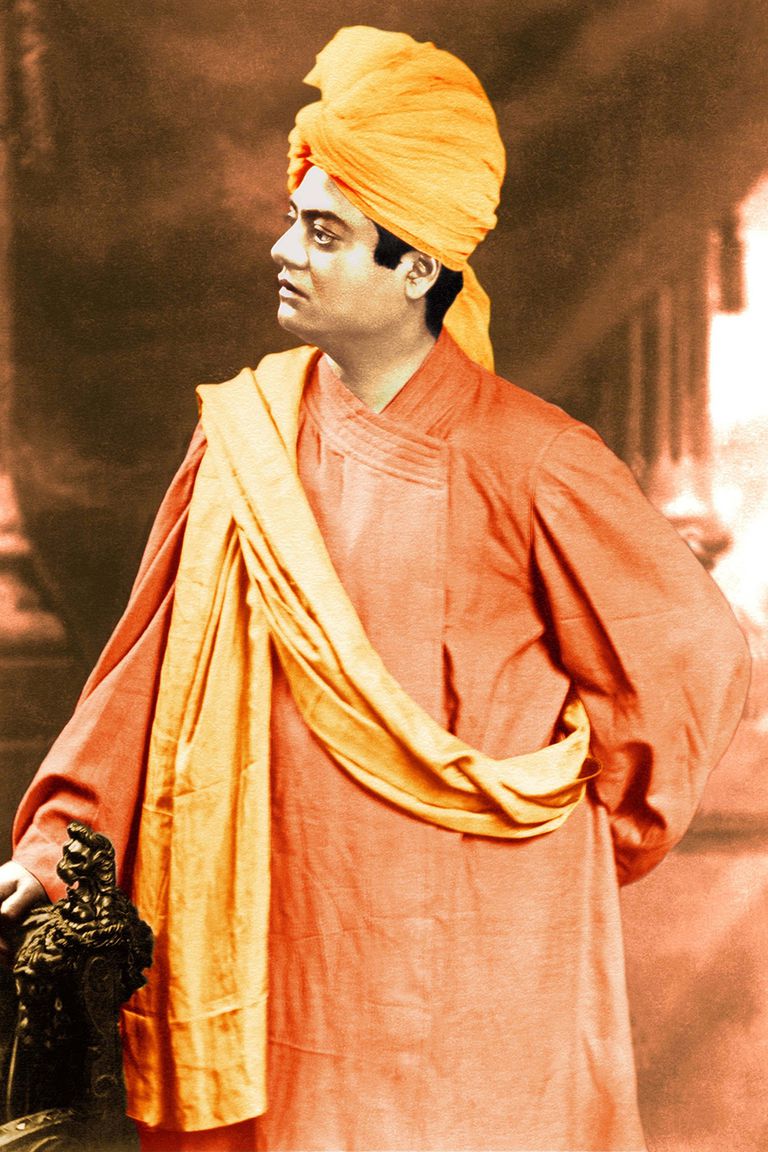
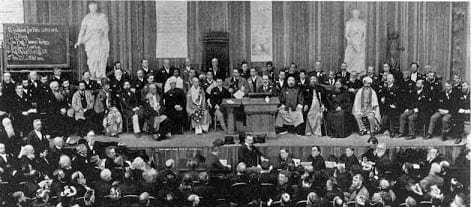

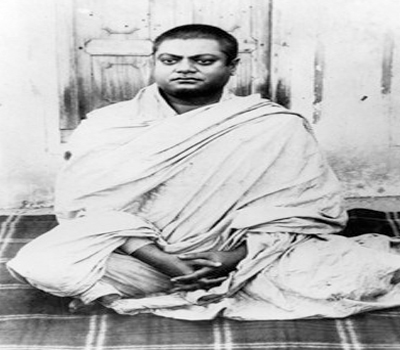
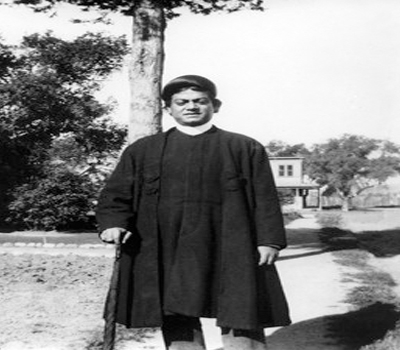
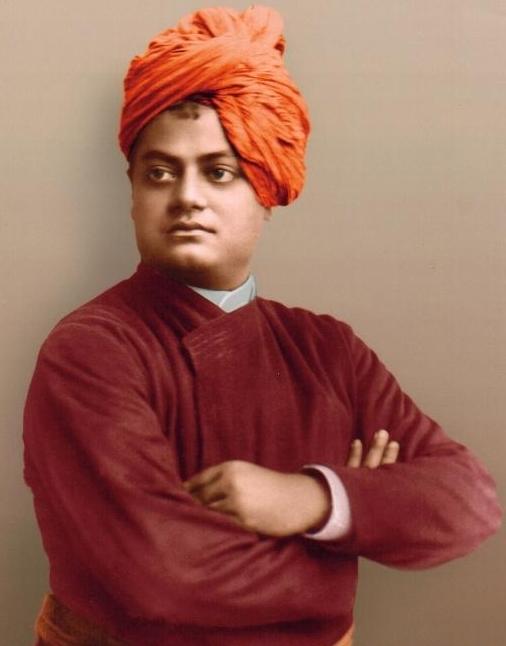
Leave A Comment